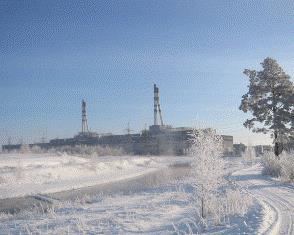Nearly three-quarters of Lithuanians believe that it is possible to operate nuclear power plants in safety, a survey carried out on behalf of the state nuclear regulatory authority has found.
 |
| Ignalina: shut down |
A representative survey of 1000 Lithuanian residents carried out for the Lithuanian State Power Safety Inspectorate (Vatesi) found that 73% of the population felt that it was possible to operate nuclear power plants in a safe manner. This, says Vatesi, is slightly up on the 69% recorded in the European Union's 2006 Eurobarometer special survey. The opinion poll was carried out in October-November 2009, as Lithuania was preparing to permanently close its only operating nuclear reactor, Ignalina unit 2, as a condition of European Union (EU) accession.
More than half of those polled agreed with a statement that storage and transportation of radioactive waste could be done safely, with 56% agreeing on storage and 59% on transportation. When questioned about the possible construction of a radioactive waste storage facility, the main concerns voiced by citizens were about the possible impacts on health and the environment (37%) and any release of radioactivity from the storage facility into the environment (36%).
Although 66% of respondents said they felt "totally uninformed" about nuclear safety issues, this was down from the 82% who expressed such misgivings in 2006, and a quarter of those surveyed said they felt sufficiently informed. The respondents pleaded for "summarised and understandable" information on radioactive waste storage methods, the location and construction methods of waste storage facilities, and the current and future impacts of the Ignalina nuclear power plant on health.
Lithuania was home to two Russian-designed RBMK reactors, which started up in 1983 and 1987 and were designed to operate for 30 years. However, the country was required to close both units, which are similar in design to those at Chernobyl in Ukraine, as a condition of its accession to the EU. As a result, Lithuania closed its last operating nuclear unit, Ignalina 2, on 31 December 2009, and will be reliant on imported electricity until it can replace the lost capacity. The enforced closure did not receive widespread public support, with a non-binding 2008 referendum strongly supporting a postulated extension of the unit's operating life to 2012.
Lithuania has proposed building a new nuclear power plant to replace Ignalina at nearby Visaginas, with the participation of neighbouring Poland, Estonia and Latvia. In December 2009, it officially launched its search for strategic investors to build and operate the twin-unit plant, with the first of the reactors potentially starting up in 2018.
Meanwhile, the Ignalina plant must be decommissioned, and in November 2009 a consortium led by France's Areva won a contract to design a near-surface repository for low- and intermediate-level waste (LLW/ILW) from the operation and decommissioning of the plant.
Michail Demčenko, acting head of Vatesi, described public opinion as "very important" to the regulatory authority, and called for every institution, especially Vatesi, to work together to improve regulatory activities, increase transparency, and encourage open communication with the public. 50% of respondents to the latest poll thought that Vatesi was performing its job of regulating the safety of nuclear installations in Lithuania sufficiently, but 14% were of the opinion that regulation and supervision was unsatisfactory.
The survey was carried out on behalf of Vatesi by joint Lithuanian-British market research and public opinion survey company Baltijos Tyrimai (Baltic Surveys).
Researched and written
by World Nuclear News




_23621.jpg)

_63865.jpg)
_18570.jpg)





